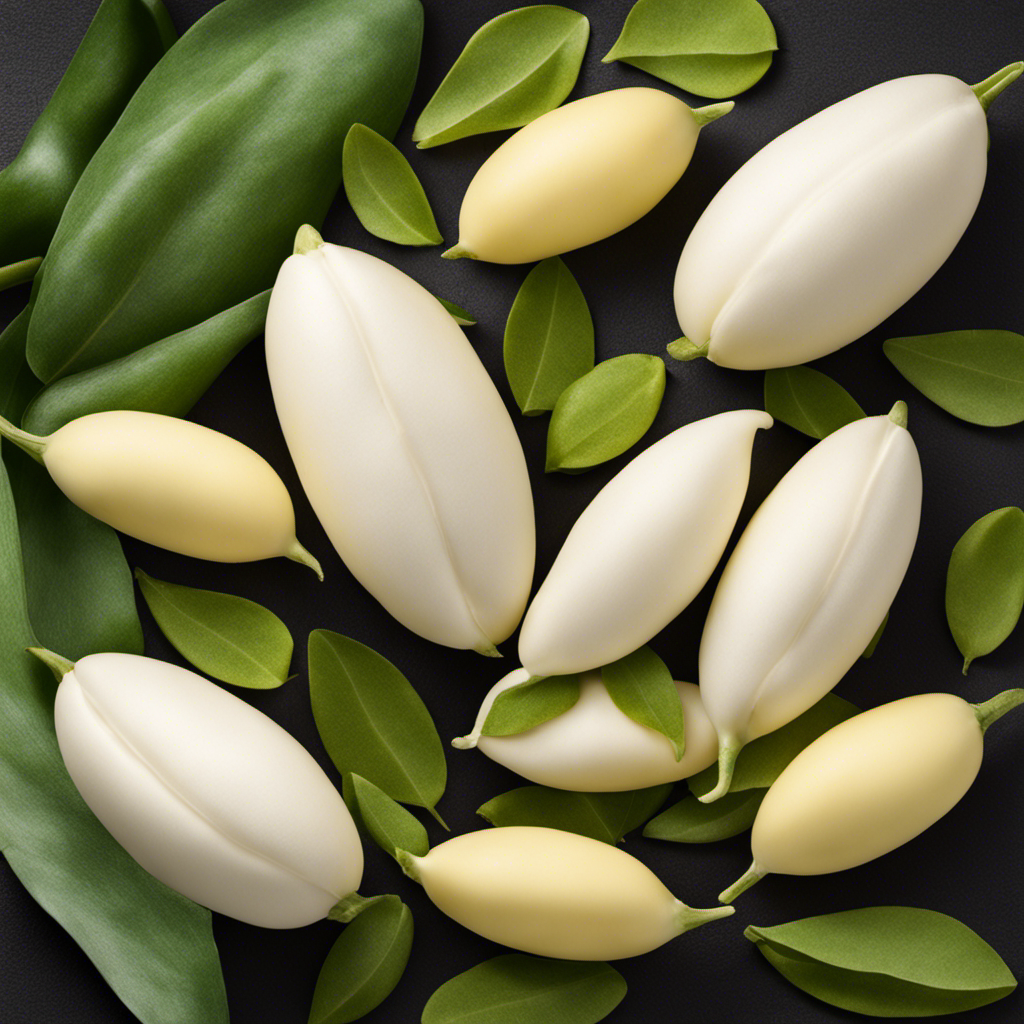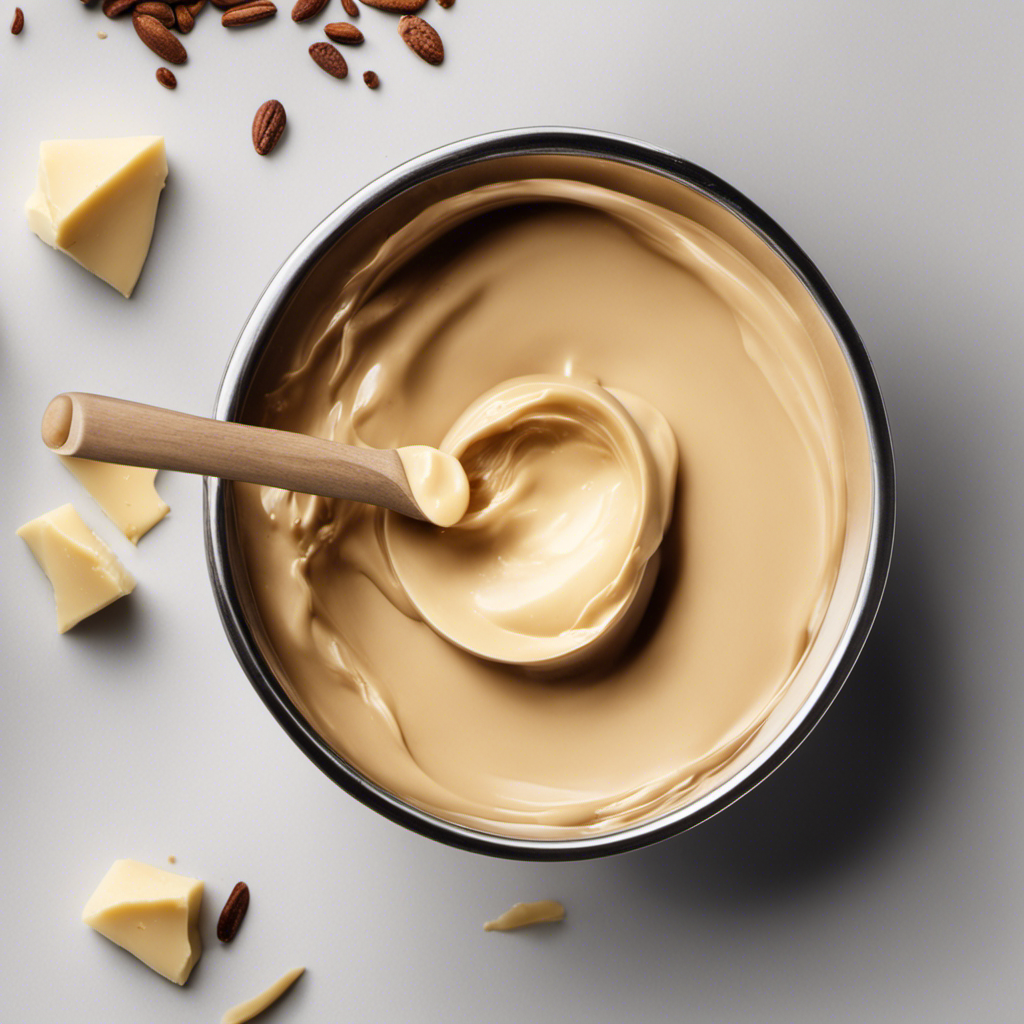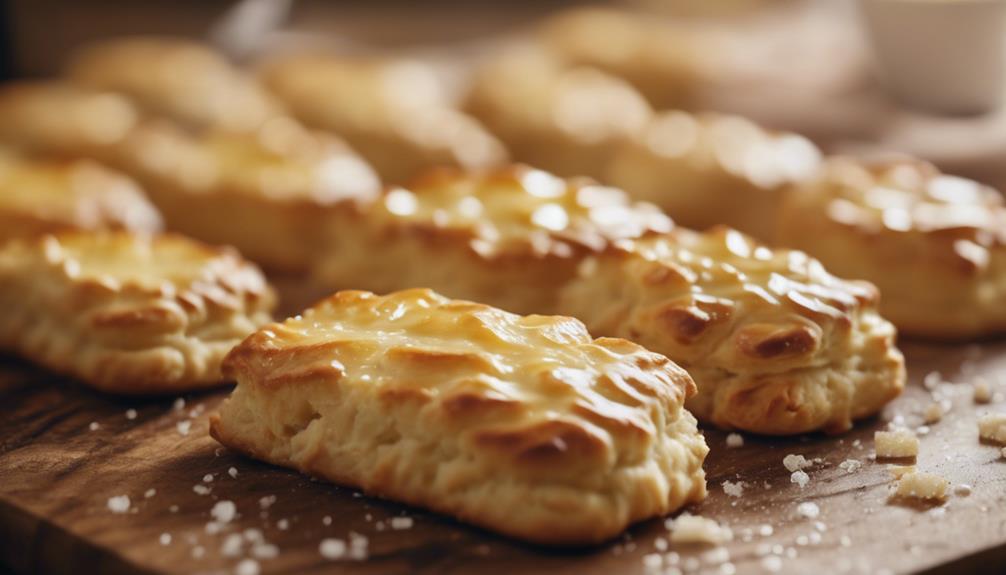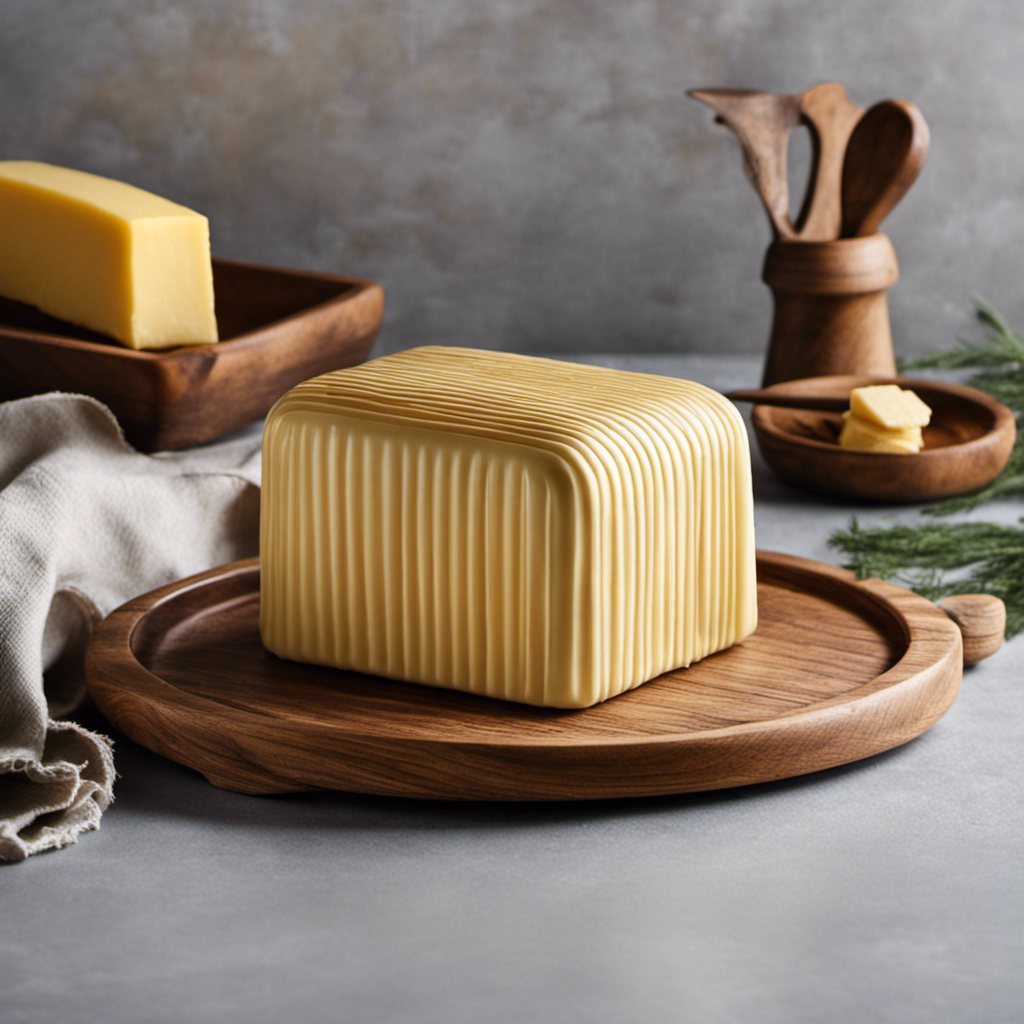I’ve always been intrigued by the realm of beans. Therefore, when I came across butter beans, I couldn’t resist pondering, what type of beans are they? It is a seemingly straightforward question, but the answer is anything but simple.
In this article, we’ll dive into the history, characteristics, and culinary uses of these versatile legumes. Get ready to have your taste buds tantalized and your curiosity satisfied as we explore the wonderful world of butter beans.
Key Takeaways
- Butter beans have a creamy texture and buttery flavor when cooked.
- They are oval-shaped, slightly flattened, and have a smooth texture.
- Butter beans are an excellent source of protein, fiber, and vitamins.
- They can be used in a variety of dishes like soups, stews, and salads.
History of Butter Beans
If you’re curious about the history of butter beans, you might be surprised to learn that they have been cultivated for centuries.
Butter beans, also known as lima beans, have a rich and fascinating history that dates back to ancient times. The origins of butter beans can be traced back to South America, where they were first domesticated around 4,000 years ago.
From there, they spread to North America and Europe during the 16th century. These beans got their name from their creamy texture and buttery flavor when cooked. They quickly became a staple in many cuisines around the world, valued for their nutritional content and versatility in cooking.
Today, butter beans are enjoyed in a wide variety of dishes, from soups and stews to salads and side dishes.
Characteristics and Appearance of Butter Beans
To identify butter beans, you can easily recognize them by their creamy color and distinctive shape. These beans have a smooth texture and are usually pale yellow or white in color. They are oval-shaped and slightly flattened, resembling a small kidney bean.
Butter beans are versatile and can be used in a variety of recipes. One popular dish is butter bean soup, which combines the creamy beans with vegetables and broth for a comforting and delicious meal. Other recipes include butter bean salads, stews, and casseroles.
These beans are not only tasty but also packed with nutrients. They are a good source of protein, fiber, and vitamins. Incorporating butter beans into your diet can provide numerous health benefits.
Nutritional Value of Butter Beans
Butter beans are an excellent source of protein, fiber, and vitamins, offering numerous health benefits. These legumes are packed with nutrients that support overall wellness.
They are low in fat and cholesterol-free, making them a healthy addition to any diet. Butter beans provide a good amount of plant-based protein, which is essential for muscle growth and repair. They are also rich in dietary fiber, promoting digestive health and preventing constipation.
Additionally, butter beans are a great source of vitamins such as folate, magnesium, and iron, which are important for energy production and maintaining healthy blood cells.
When it comes to cooking methods, butter beans can be boiled, steamed, or even incorporated into various dishes like soups, stews, and salads.
Culinary Uses of Butter Beans
When it comes to cooking with butter beans, there are many delicious options to explore.
Some popular butter bean dishes include creamy soups, hearty stews, and flavorful salads.
If you’re looking for alternative butter bean recipes, you can try making butter bean hummus, butter bean burgers, or even butter bean brownies for a unique twist on traditional dishes.
Popular Butter Bean Dishes
Have you ever tried making a delicious butter bean salad with fresh vegetables?
Butter beans are a versatile legume that can be used in a variety of popular recipes. One of the most popular ways to enjoy butter beans is in a salad. Simply combine cooked butter beans with crisp vegetables like tomatoes, cucumbers, and bell peppers, and toss with a tangy vinaigrette for a refreshing and satisfying dish.
Including butter beans in your diet has many benefits. They are high in fiber, protein, and essential nutrients like iron and folate. They also have a low glycemic index, making them a great option for those watching their blood sugar levels.
In the next section, we will explore alternative butter bean recipes that are sure to please your taste buds.
Alternative Butter Bean Recipes
If you’re looking to switch up your usual butter bean dishes, there are plenty of alternative recipes that you can try. Butter beans aren’t just for savory dishes, they can also be used to create delicious desserts.
Here are a few alternative butter bean recipes that you might enjoy:
-
Butter Bean Brownies: These rich and fudgy brownies are made with pureed butter beans, giving them a creamy texture and added nutrition.
-
Butter Bean Blondies: Similar to the brownies, these blondies are made with butter beans instead of flour, resulting in a gooey and satisfying treat.
-
Butter Bean Soup: A comforting and hearty soup made with butter beans, vegetables, and spices. It’s perfect for a cozy dinner on a cold winter night.
-
Butter Bean Hummus: A twist on traditional hummus, this recipe uses butter beans instead of chickpeas, resulting in a creamy and flavorful dip.
Growing and Harvesting Butter Beans
To grow and harvest butter beans, you’ll need to provide ample sunlight and regular watering. Butter beans, also known as lima beans, thrive in warm climates and require at least six to eight hours of direct sunlight each day.
It’s best to plant them in well-drained soil that is rich in organic matter. You can start the seeds indoors about four to six weeks before the last frost date, and then transplant them outside once the soil has warmed up. Alternatively, you can directly sow the seeds in the garden after all danger of frost has passed.
Butter beans should be watered regularly, keeping the soil evenly moist but not waterlogged. The beans will be ready for harvest about 65 to 85 days after planting, depending on the variety. It’s important to pick them when the pods are plump and the beans inside are fully developed. This is typically when the pods turn a creamy white color and start to split open.
Harvesting should be done in the early morning when the temperatures are cooler to prevent the beans from drying out too quickly. By following these growing techniques and harvesting at the right time, you can enjoy a bountiful harvest of delicious butter beans.
Health Benefits of Butter Beans
I love eating butter beans because they are not only delicious, but they also provide numerous health benefits.
One key point to consider is the nutritional value of butter beans. They are a great source of protein, fiber, and important vitamins and minerals.
Additionally, the high fiber content in butter beans can contribute to improved digestion and overall gut health.
Nutritional Value of Butter Beans
You’ll be pleased to know that butter beans are packed with essential nutrients. These tasty legumes are not only delicious but also offer numerous health benefits. Here are some key nutrients found in butter beans:
-
Fiber: Butter beans are an excellent source of dietary fiber, which helps regulate digestion and promotes a healthy gut.
-
Protein: These beans are a good plant-based source of protein, which is essential for muscle repair and growth.
-
Vitamins: Butter beans contain various vitamins, including folate, thiamin, and vitamin B6, which play a vital role in energy production and brain health.
-
Minerals: They are also rich in minerals like iron, magnesium, and potassium, which are essential for proper body function.
Incorporating butter beans into your diet can boost your fiber intake, aiding in weight management and promoting overall wellbeing. So, why not add these nutritious beans to your meals and enjoy their health benefits?
Health Benefits of Fiber
Incorporating butter beans into your diet can boost your fiber intake, aiding in weight management and promoting overall wellbeing. Fiber is an essential nutrient that plays a crucial role in maintaining a healthy digestive system. It helps regulate bowel movements, prevents constipation, and reduces the risk of developing chronic diseases such as heart disease and diabetes.
Including fiber-rich foods like butter beans in your meals can help you meet your daily fiber requirements. The importance of dietary fiber cannot be overstated, as it not only supports digestion but also helps control blood sugar levels, lowers cholesterol, and promotes satiety. By incorporating butter beans into your diet, you can enjoy the numerous health benefits that come from consuming fiber-rich foods.
Transition: Now that we understand the importance of dietary fiber, let’s explore how butter beans specifically aid in digestion.
Butter Beans and Digestion
Now that we’ve discussed the health benefits of fiber, let’s dive into how butter beans can support digestion.
Butter beans, also known as lima beans, are not only delicious but also rich in nutrients that can promote a healthy digestive system. Here are some ways butter beans can benefit your digestion:
-
High in fiber: Butter beans are packed with fiber, which can help regulate bowel movements and prevent constipation.
-
Promote weight loss: The fiber in butter beans can help you feel fuller for longer, aiding in weight loss efforts.
-
Heart health: Butter beans contain soluble fiber that can help lower cholesterol levels, reducing the risk of heart disease.
-
Gut health: Butter beans provide prebiotic fibers that feed the beneficial bacteria in your gut, promoting a healthy gut microbiome.
Incorporating butter beans into your diet can not only support digestion but also contribute to weight loss and heart health.
Butter Beans Vs. Other Bean Varieties
If you’re wondering about the differences between butter beans and other bean varieties, one key distinction is their creamy texture.
Butter beans, also known as lima beans, have a smooth and buttery consistency when cooked.
In comparison, black beans have a firmer texture and a slightly nutty flavor. They hold their shape well and are commonly used in Latin American cuisine.
On the other hand, kidney beans have a mealy texture and are often used in dishes like chili.
While butter beans are larger in size, both black beans and kidney beans are smaller and more compact.
All three beans are nutritious and high in fiber, but the variation in texture and flavor allows for diverse culinary uses.
Frequently Asked Questions
Can Butter Beans Be Consumed Raw, or Do They Need to Be Cooked?
Butter beans need to be cooked before consuming them. Raw butter beans can contain toxins that may not be safe to eat. Cooking them properly helps to remove any potential toxins and enhances the nutritional value of butter beans.
Are Butter Beans a Good Source of Protein for Vegetarians and Vegans?
Butter beans are a fantastic source of protein for vegetarians and vegans. They also pack a punch when it comes to fiber and carbohydrates. Plus, they can aid in weight loss and management. So, go ahead and butter up!
How Long Do Butter Beans Typically Take to Cook?
Butter beans typically take around 1-2 hours to cook. To speed up the process, you can soak them overnight or use a pressure cooker. These beans are a great source of fiber and protein, offering numerous health benefits.
Can Butter Beans Be Used as a Substitute for Other Types of Beans in Recipes?
Butter beans can be used as a creamy alternative to other types of beans in recipes. They are commonly used in Mediterranean cuisine, adding a rich, buttery flavor and creamy texture to dishes.
Are There Any Potential Allergens or Sensitivities Associated With Butter Beans?
There are no known allergens or sensitivities associated with butter beans. They offer potential health benefits and have a high nutritional value compared to other legumes.
Conclusion
In conclusion, butter beans are a delicious and nutritious legume that have been enjoyed for centuries. Their creamy texture and delicate flavor make them a versatile ingredient in a variety of culinary dishes.
Whether you’re simmering them in a hearty stew or blending them into a smooth dip, butter beans are sure to add a touch of richness and satisfaction.
So, next time you’re looking for a bean that’s as smooth as butter, give butter beans a try. You won’t be disappointed!










